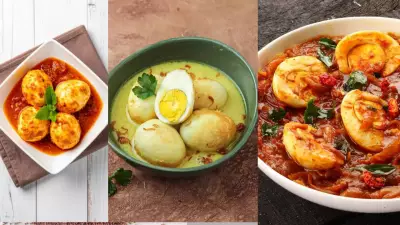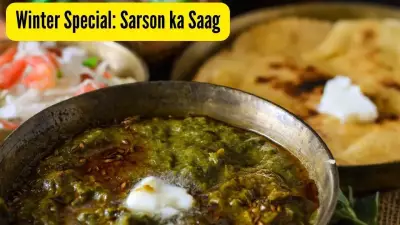
India's vibrant culinary landscape, once defined by its diverse regional flavours and time-honoured recipes, is facing an unprecedented threat from the relentless march of fast food culture. The very essence of what makes Indian cuisine unique is gradually disappearing from our plates and our collective memory.
The Vanishing Act of Regional Specialities
Across India's length and breadth, traditional dishes that once defined local identities are becoming increasingly rare. From the complex spice blends of Kashmir to the coconut-infused coastal delicacies of Kerala, generations of culinary wisdom are being lost to the convenience of standardized, mass-produced meals.
The transformation is particularly evident in urban centers, where the golden arches and pizza boxes have become more familiar than the local vendor selling regional specialties. This shift represents more than just changing food preferences—it signifies the erosion of cultural heritage.
Why Traditional Recipes Matter Beyond Taste
Traditional Indian cooking isn't merely about satisfying hunger; it's a living repository of history, geography, and cultural identity. Each region's cuisine tells a story of local ingredients, climatic conditions, and historical influences that have shaped communities for centuries.
- Cultural Memory: Family recipes passed down through generations carry stories and traditions
- Nutritional Wisdom: Traditional combinations often reflect deep understanding of nutritional balance
- Seasonal Eating: Regional cuisines naturally align with local growing seasons and availability
- Community Bonds: Food preparation and sharing rituals strengthen social connections
The Acceleration of Culinary Amnesia
Several factors are contributing to this rapid decline of traditional food knowledge:
- Urbanization: As families move to cities, they often abandon time-consuming traditional cooking methods
- Changing Lifestyles: Busy schedules make fast food alternatives more appealing than elaborate home cooking
- Globalization: International food chains and processed foods dominate urban foodscapes
- Generational Gaps: Younger generations show less interest in learning complex traditional recipes
Preserving What Remains: A Call to Action
While the situation appears dire, there's growing recognition of the need to preserve India's culinary heritage. Food historians, chefs, and cultural organizations are working to document endangered recipes and cooking techniques before they disappear completely.
"Every time an elder passes away without passing on their culinary knowledge, it's like losing a library of cultural wisdom," notes a food anthropologist working in rural India.
Revival efforts include community cooking workshops, digital archives of traditional recipes, and restaurants specializing in authentic regional cuisines. However, these initiatives need broader support and awareness to make a significant impact.
The Way Forward: Balancing Tradition and Modernity
The solution isn't about rejecting modernity but finding a balance that allows traditional flavours to thrive alongside contemporary food options. This might involve:
- Integrating traditional cooking into school curricula
- Supporting local farmers and heirloom ingredient producers
- Celebrating regional food festivals with greater enthusiasm
- Encouraging restaurants to feature authentic regional dishes
As India continues its rapid development, the preservation of its culinary heritage becomes not just a matter of taste, but of cultural survival. The flavours that have defined our identities for generations deserve more than just a place in memory—they deserve a future on our plates.





